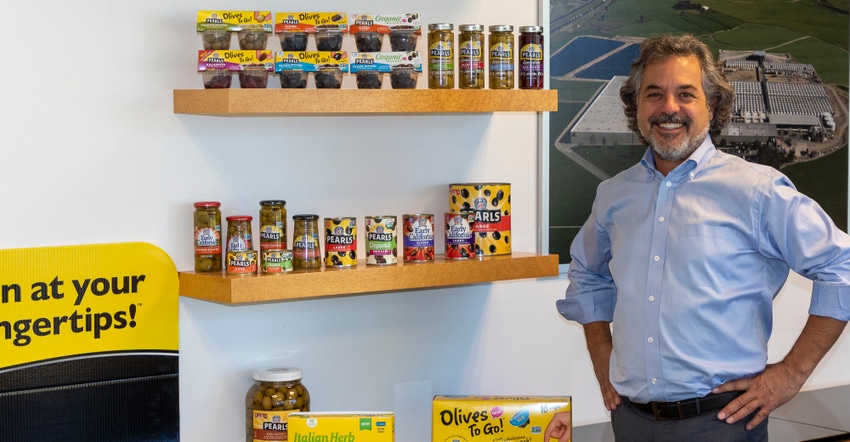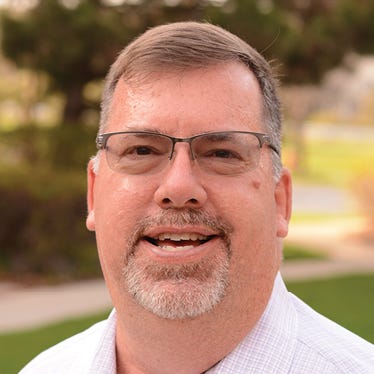
Growers blindsided earlier this year by news that their contracts were being immediately cancelled saw a new dawn emerge when a competing processor stepped in with offers to buy that fruit.
Last March, growers with Bell-Carter Foods learned suddenly that their contracts would be terminated. The timing couldn’t have been worse as farmers faced a new growing season and no time to recover from their losses.
Blindsided by the cancellations, many of those growers would shed tears of joy three weeks later when Musco Family Olive Company stepped in and offered contracts for the 2019 season.
Contracts
In its cancellation letter to growers, Bell-Carter Foods cited the need to “compete in a global marketplace” as reason for terminating the contracts. For Musco Family Olive Company, a family-run table olive processor with Italian roots, taking on the new contracts fit with company plans and the new life breathed into the industry by the 2018 U.S. International Trade Commission win.
Third generation owner and Chief Executive Officer Felix Musco looks back at the anti-dumping dispute that led to a 37.5 percent tariff on imported black olives as the breath of life the U.S. industry needed to move forward with plans to modernize the table olive industry and make it competitive in global markets.
Musco wouldn’t say just how many former Bell-Carter growers were given new contracts, though he did characterize it as “a significant number of them.”
Industry Optimism
The trade dispute win allows U.S. table olive growers to modernize an industry plagued by high input costs through hand-harvested fruit. Advances in technology and leadership within the small industry is pushing to mechanically harvest the crop with machines like those used for harvesting pistachios and prunes.
New orchard designs are already being employed to boost tree counts to 250 per acre on double-line drip – proven methods that will reduce input costs and help grow the industry Musco says already enjoys positive perceptions from domestic and international buyers for its high quality.
The move could also help the company solidify its leading role in the industry as a provider of ripe olives to institutional markets and consumers, which it does under its own label.
“We do a lot of private label as well,” Musco said.
Musco offers conventional and certified organic olives to a host of markets both institutional and private consumer. Its consumer-based “Olives on the Go” packaging offers customers a convenient way to snack on olives from packaging that does not need refrigeration and can easily be carried.
Musco’s confidence in the direction of the U.S. table olive industry is such that he is offering upwards of one million table olive trees for free to growers willing to commit to modern, mechanical harvest of table olives. He hopes to have 5,000 acres of modern table olive orchards, defined as trees and fruit capable of mechanical harvesting, being harvested within five years.
The company’s Tracy processing plant is also undergoing expansion as it seeks to further its sustainability. New ponding basins will be complete later this year, increasing capacity in the closed loop system, ensuring the plant can fully recycle additional water used in processing as it takes on higher volumes of fruit.
The ponding basins are part of a system that allows Musco to grow NyPa, a type of salt-loving forage grass irrigated by the brackish wastewater left over from processing the olives. Over 100 acres of the grass is grown on the hillsides next to the processing plant, eliminating its need for the plant to be connected to the local public water treatment system, according to John Pieretti, vice president of plant operations.
Most of the water generated from the olive processing can be land-applied to irrigate the NyPa, while the rest is stored in holding ponds. Consistent winds in the region that are used to power wind generators in the area aids this process by speeding up the evaporation on these ponds. Once that water is evaporated and the remaining materials are dried, they can be easily removed.
Processing Olives
Musco receives olives at two plants – one in the southern San Joaquin Valley community of Lindsay and the other in the Sacramento Valley community of Orland. After the fruit is graded at the two facilities it is trucked to its Tracy facility, where it undergoes processing and storage. Fruit can be moved through the system year-round because of the ability to store unfinished fruit in a host of onsite tanks.
Olives are picked and arrive unripened. They are initially processed that way until the time to debitter the fruit, remove the pits and turn it black prior to packaging in the various forms Musco offers.
Pits removed from the olives are later sold for biomass.
Growing Olives
Dennis Burreson is a Northern California olive grower and Musco’s vice president of field operations and industry affairs. He’s grown olives much of his life and is likewise optimistic about the industry in the wake of changes in U.S. trade policy and technology.
Burreson recently took advantage of the company’s offer to provide nursery stock, planting additional acreage of olives earlier this year between Corning and Orland that he expects to mechanically harvest for the first time in 2021.
He now has 400 acres of table olives as part of 1,500 acres of farming operations that includes almonds and walnuts. He recently pulled the last of his prune trees and years earlier stopped growing blueberries as he looked ahead to streamlining his olive production.
“The economics are quite favorable for olives,” he said.
Culturally, the trees are trimmed differently to allow machines to attach to the trunk and shake the olives off the tree. Unlike previous practices that barely trim olive trees and leave branches hanging almost to the ground, modern practices will shape the trees much like an almond tree in stature and size.
This year’s olive crop was exceptional for Burreson, who showcased an orchard he said yielded 10 tons per acre. At current prices, this is more profitable than almonds or walnuts, he said.
“Ten tons is exceptional,” he said. “Then again, maybe it’s not if we do it right.”
Olives are alternate bearing, meaning they tend to produce heavy crops every other year. Burreson believes good yields from well-managed olive trees during “on-year” production should yield over seven tons per acre.
Another benefit to olives is their drought tolerance. Using double-line drip irrigation, Burreson says he can irrigate with less than two acre-feet per year – or less than half of what almond trees need to produce effectively. Olives also tend to be better anchored to the ground than almonds, which is a consideration in regions like the Sacramento Valley, where strong winds in the spring, combined with water-saturated soils, can easily topple trees with shallow root systems.
About the Author(s)
You May Also Like






